While we were in Lunenberg, Nova Scotia, the crew of a 134-ft scalloper in port for maintenance work gave us a tour of their factory ship. (We were asked not to include boat, crew and company names.) The ship was built in 1997, but is well-maintained and is equipped with the latest scallop auto-shucking equipment.
This post is the 17th in the Technology Series. Past posts have included Deer Island Treatment Plant, USS California Distinguished Visitor Embark, Metal Shark Aluminum Boats, the heavy-equipment manufacturer Bell Equipment, and the 2015 Moth World Championships.
The first picture below is the bridge view to the working deck aft where the outside work is done. The picture after that is the bridge view forward.
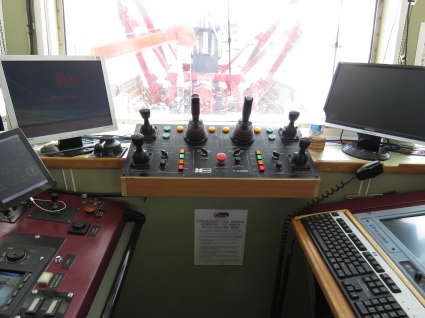
|

|
The ship’s owners designed the automatic scallop shucking machine that can transform a scallop from shelled to individually flash-frozen in seconds. This saves time, produces an excellent product, and manual-shucking is prone to repetitive stress injuries. The scallop processing plant is below the weather deck. Here scallops are auto-shucked, run through a rotary flash-freezer and the individually frozen scallops are dropped into the hold below.
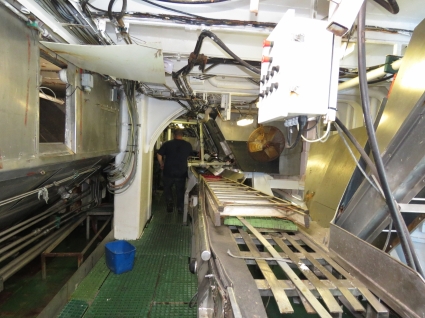
|
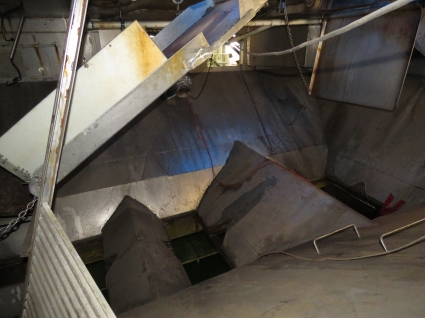
|
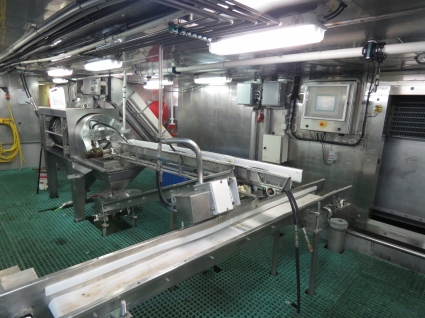
|
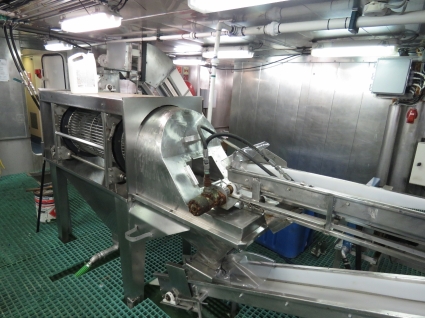
|
Pictured below is the ship’s well-equipped workshop. Scallopers operating in Georges Bank see some of the worst weather in the world. The gear takes a beating and they need lots of spares and a workshop to keep the equipment operating.
It’s common for marine hydraulic systems to be directly driven by the engine through a power take-off. This boat has a vast amount of hydraulically powered equipment on board, so rather than having a single very large pump running directly off the main engine, you can see three pumps in a row below, electrically-driven. The single engine both drives the boat and through a shaft-generator also generates all the electrical power to run the scallop plant and the hydraulic systems.
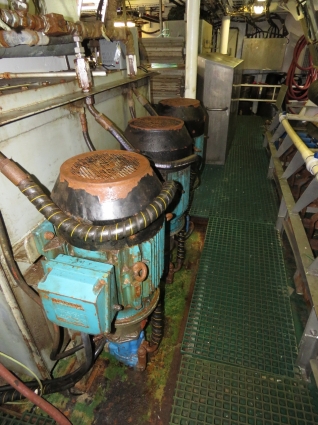
|
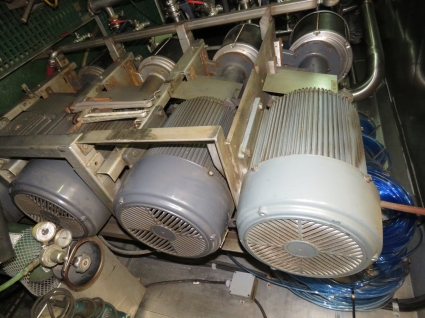
|
Big boats have big engines and that’s particularly the case for single-engine boats like this scalloper. This single six-cylinder Caterpillar powers the single screw that runs the boat, and visible towards the end of the shaft is the shaft generator that provides house power for all on-board electrical consumption including deck lights, the hydraulic systems, and the scallop plant.
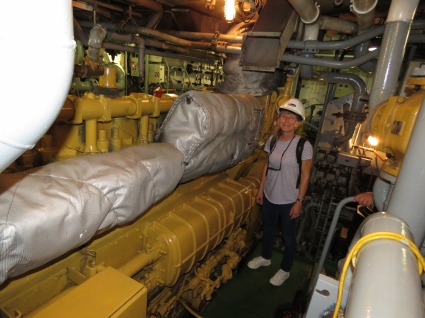
|
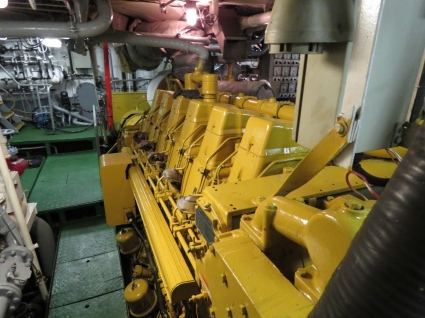
|
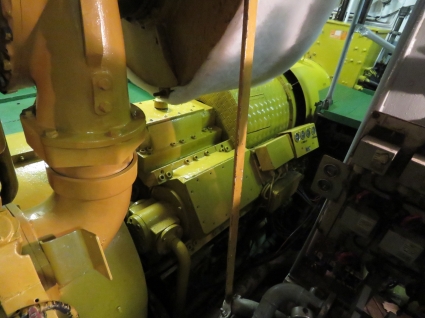
|
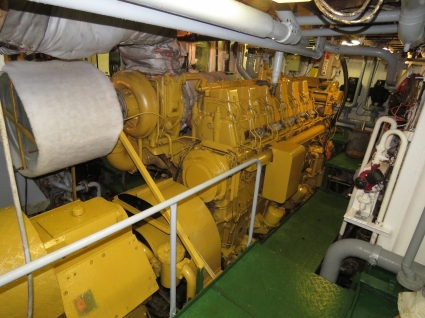
|
We had definite crane envy seeing the capable crane on their deck. At the stern of the boat are the supports used to hold the chain bag that is dragged along the bottom to catch scallops.
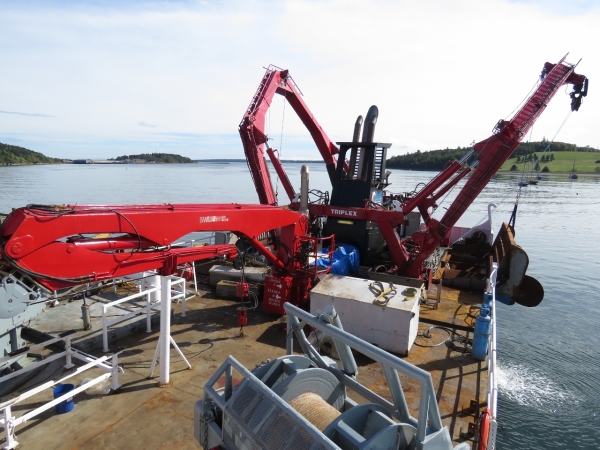
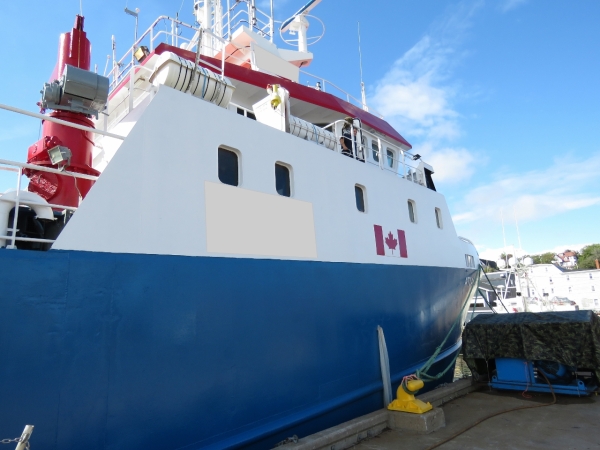
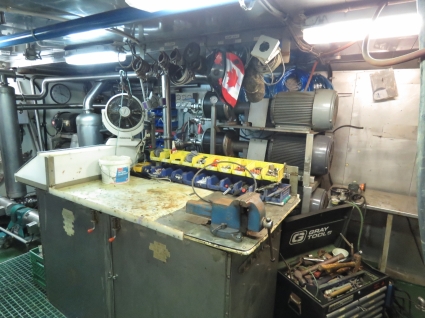
If your comment doesn't show up right away, send us email and we'll dredge it out of the spam filter.